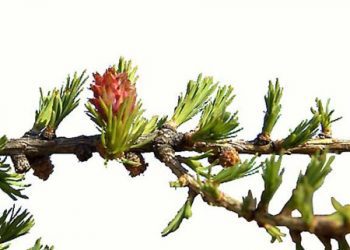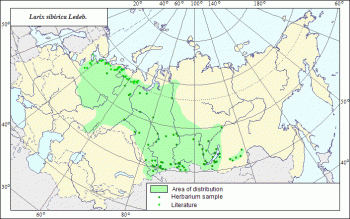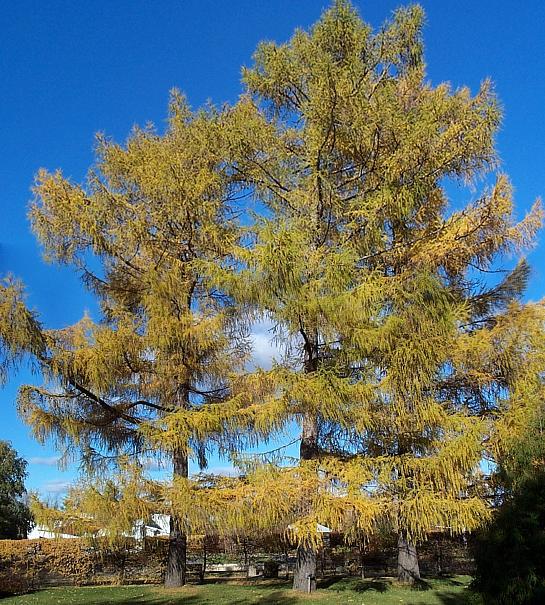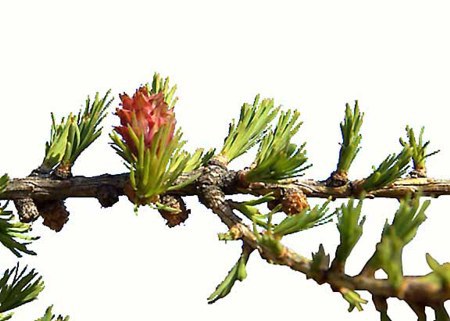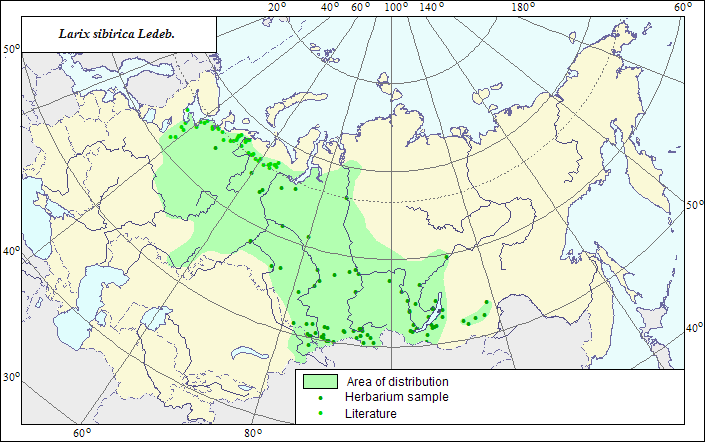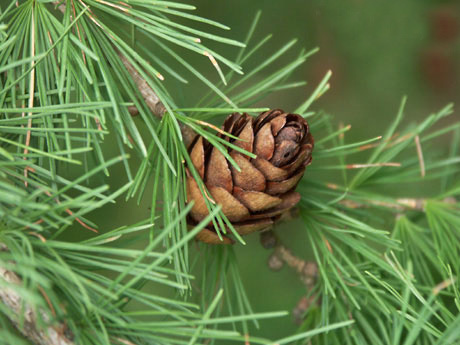Larix sibirica, first described in 1833 by Carl Friedrich von Ledebour (1785-1851), is commonly known as Siberian larch, Russian larch, as well as ЛиÌÑтвенница ÑибиÌÑ'ÑÐºÐ°Ñ (listvennica sibirskaya) in the Russian language.
Description. Siberian larch is a deciduous, coniferous species of tree that grows to heights of 80 to 200 feet (20 - 50 m) tall, with a trunk up to 40 inches (1 m) in diameter, measured at breast height. The crown is conic when young, becoming broad with age. The main branches are level to upswept, with the side branches often pendulous.
- Shoots are dimorphic, with growth divided into long shoots, typically 4 to 20 inches (10-50 cm) long, bearing several buds; and short shoots only 0.04 to 0.08 inch (1 - 2 mm) long, bearing only a single bud.
- Needles are bimorphic, with needles on new growth borne singly and arranged in a spiral around the branch and needles on older wood borne in clusters of 15 to 40 needles on short spurs. It is most easily distinguished from the closely related European larch (L. decidua) by the shoots being downy (hairless in European larch). The leaves are needle-like, light green, 0.4 to 1 inch (2 - 5 cm) long, and turn bright yellow before being shed in the autumn, leaving the pale yellow-buff shoots bare until the next spring.
- Cones are borne separately on the same tree; pollination is in early spring.
- Mature seed cones are erect in orientation, ovoid-conic in shape, 0.8 to 2 inches (2 - 5 cm) long, with 30 to 70 erect or slightly incurved (not reflexed) and downy seed scales. They are green variably flushed red when immature, turning brown and opening to release the winged seeds when mature, 4-6 months after pollination. The old cones commonly remain on the tree for many years, turning dull grey-black. A plant's minimum seed-bearing age is 10-15 years.
- Pollen cones are solitary, yellow, globose to oblong in shape, 0.16 to 0.32 inch (4 - 8 mm) in diameter, producing wingless pollen.
Distribution. This species is native to Russia, Siberia where it is found at up to 74°N on the Taymyr Peninsula. In Siberia it is said to occur as small groups mixed with other trees rather than as pure forest. It has been planted for timber production in Finland and Sweden and is known for good, rot-resistant wood.
